(This is a continuation of my narrative of a trip I took to Nicaragua seven years ago.)
We awoke the morning after our journey down the Rio San Juan to find ourselves in the Victoria Hotel. Since the power had been out when we arrived the night before, we hadn’t had the chance to check out out accommodations. Now we took advantage of the daylight to discover a simple but friendly place which served us a good breakfast. We then set out to explore the town we had traveled so far to see.
El Castillo is a small settlement on the northern bank of the Rio San Juan, near the border of Nicaragua and Costa Rica. The town is sited on a hill by a river bend where the usually-calm waters turn to rapids. This geography made the location the ideal spot to build a fort to defend the river, which is just what the Spanish did in 1673. The bend in the river would force hostile craft coming along the rover to stay within cannon range for a longer period of time than a straightaway would. The rapids would make it difficult for an enemy ship to hold its position long enough to direct cannon fire back at the town. The hill would give the town’s defenders a superior tactical position. Over the centuries, various naval battles took place here as the Spanish fought both pirate ships and the British Navy. In one such battle, the British forces were commanded by a then-22 year old Lord Nelson. The river is still vital to the town; even at the time our our 2008 visit, it was the only practical way in and out of El Castillo.
We found a mellow, slow-going town which seemed to have escaped the extreme poverty we saw as we passed other settlements on the river. There were a couple of restaurants which, during our time in El Castillo, served only chicken as a main course.
I got my first-ever look inside a restaurant kitchen in the developing world and was struck by its small size, its use of every available space, and its thoughtful organization.
There were also some small stores in town where water, bug dope, cigarettes and beer could be purchased.
One institution I was surprised to find in such a small, isolated outpost was Alcoholics Anonymous (“Unity, Service, Recovery”).
The signs of other paths to redemption were evident too.
I didn’t know if the name written on the wall was the name of the bird who always sat on his perch in front of it, but I took to calling him Marvin nonetheless.
Housing was simple but well-kept.
I had never been anyplace like El Castillo before, a town that was so self-contained, so cut off from the rest of the region. It felt peaceful and quietly prosperous. The animals there were well-fed. The school uniforms on the children walking to class were clean and tidy. The buildings were simple but pleasing to the eye. My son and I seemed to be the only foreigners in town, but our presence was taken in stride by the locals who neither ignored us nor swarmed over us, but were more than willing to talk with us. Our interactions with them furthered my impression of the Nicaraguan people as generally reserved and friendly.
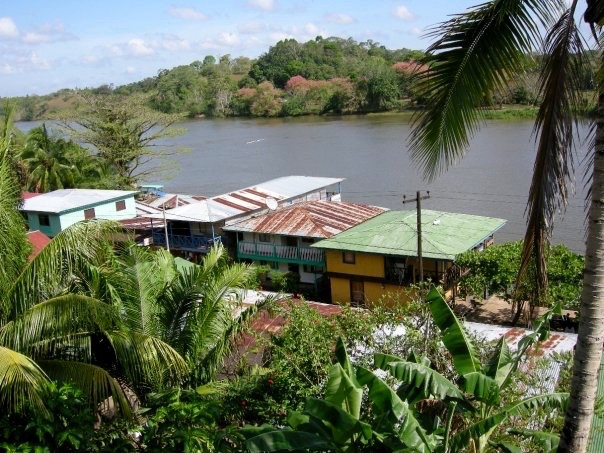
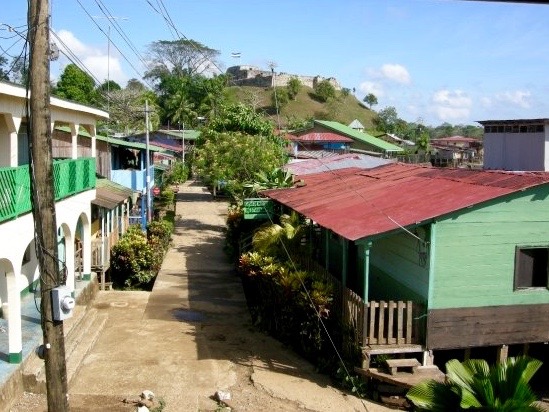
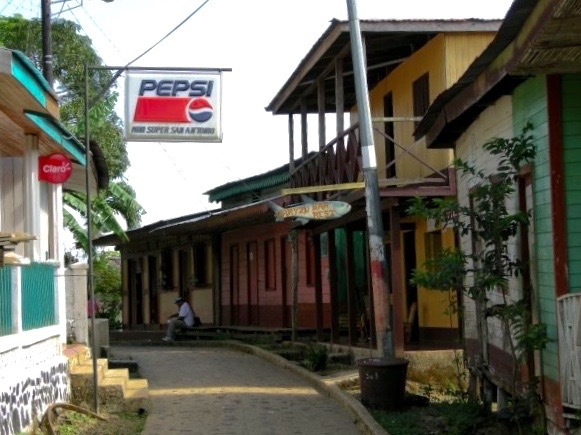
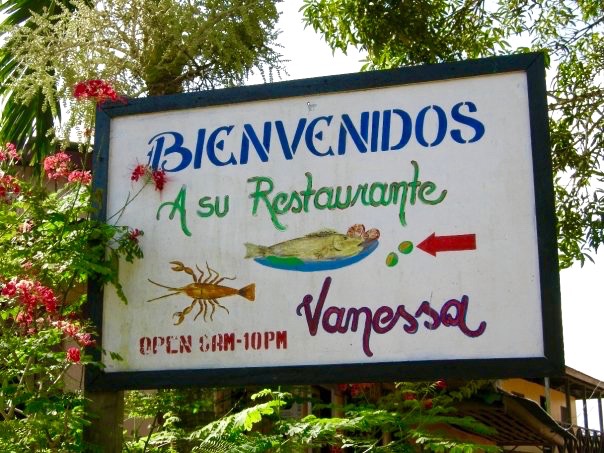
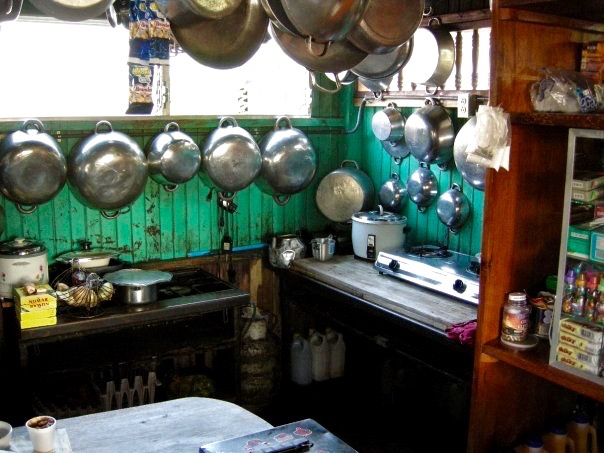
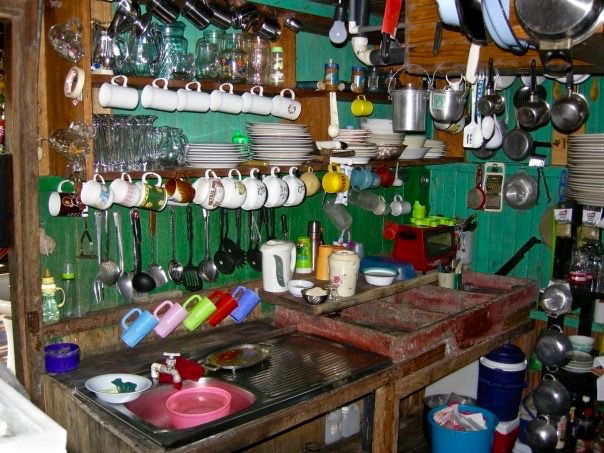


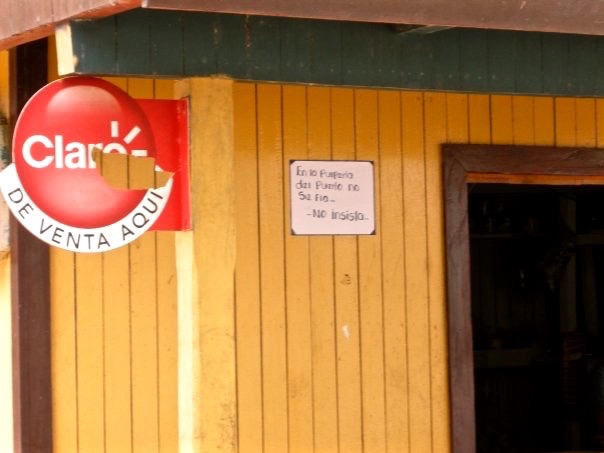
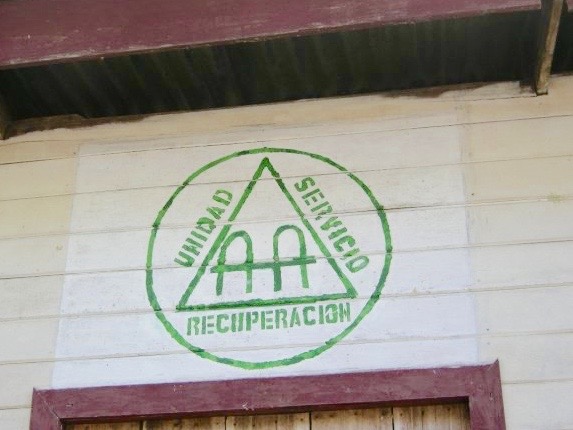
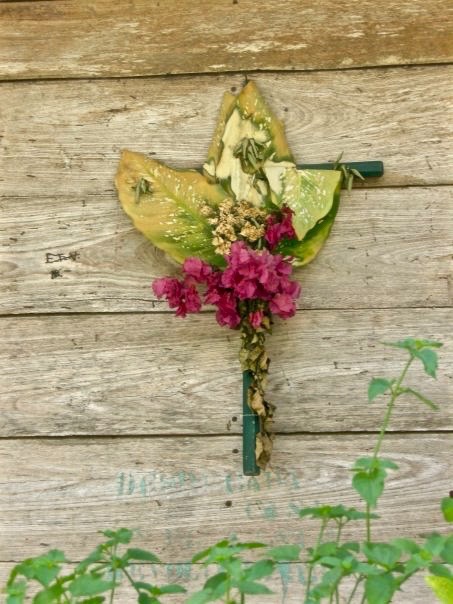
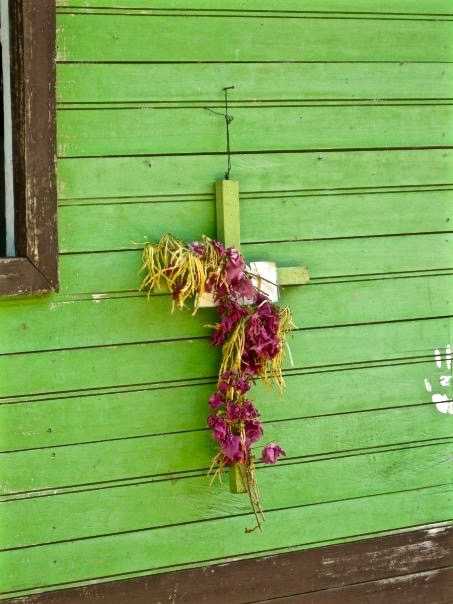
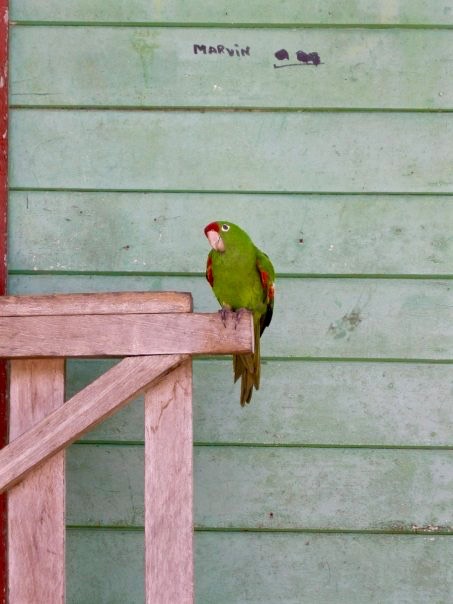
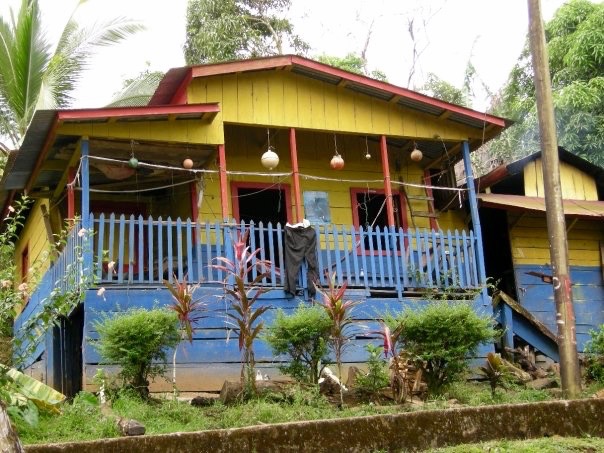
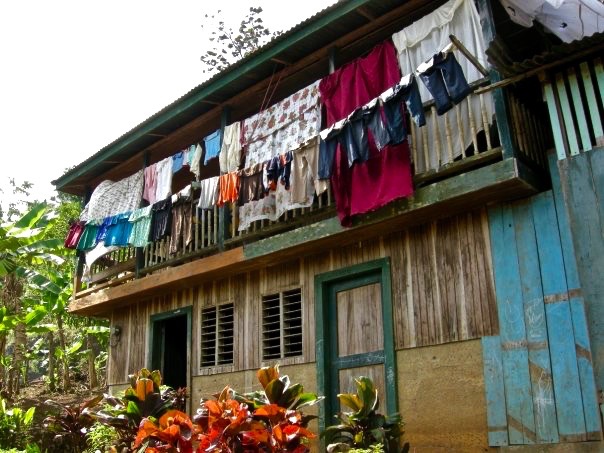


































Sounds like an interesting and comfortable place for a return visit!
It was the ur-trip for me, the journey where I discovered that I want to do more of this kind of traveling.
Very nice. Looks like a great out-of-the-way place to relax and get close to the locals.
It is indeed. At the time I went, it was very isolated from the rest of the country. I would guess that today it probably has better communication and transportation links to the rest of Nicaragua.